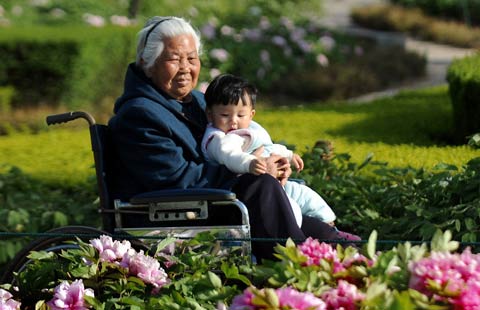Cutting edge innovation to come from China
Updated: 2014-12-15 09:39
By ANDREW MOODY(China Daily)
|
|||||||||||
 |
|
Peter Williamson, professor of international management at Cambridge University's Judge Business School, believes new management ideas are emerging out of China. NICK J. B. MOORE / FOR CHINA DAILY |
Innovation helps firms keep pace with changing market trends
Peter Williamson believes the Chinese are emerging at the cutting edge of global management practices.
One of the world's leading management experts, he argues managers in China are now taking a lead in the way the Japanese did in the 1980s with their ideas of "Just in Time" and "Total Quality Control" that revolutionized manufacturing and customer care.
He argues China's contribution is in building management systems that can deliver "accelerated innovation" that can keep pace with a fast-changing domestic consumer market.
"What we are seeing in China is a lot of this accelerated innovation and different ways of speeding things up as well as reducing costs that has not yet quite coalesced into something recognizable like what came from Japan such as "Just In Time" but it is heading in that direction.
"It is building toward a Chinese management style and a Chinese way of doing things."
Williamson, 57, who is professor of international management at Cambridge University's Judge Business School and travels to China six times a year, was the co-author with his colleague Eden Yin of an article, Accelerated Innovation: the New Challenge from China, which appeared in the influential MIT Sloan Management Review.
The article has prompted a debate in the business media and among management academic institutions globally as to whether management practices in China will soon become a template for Europe and the United States.
"I think that is a very interesting question and something I debate a lot with Western companies. I believe the answer will be "yes" because it actually fits in with the demands of modern society to reduce lead times and have faster product development cycles.
"What the Chinese are able to do is to take a new technology and rather than it taking 10 or 15 years to produce a mass market product, as is currently the case, to actually come up with one in one to two years. I believe this will become more common and that in order to compete, established Western companies and, indeed, Japanese ones will need to learn it."
Williamson and Yin's recent research was the result of interviewing 50 representatives of some 23 companies over a period of three years.
What they found was Chinese companies taking advantage of a vast supply of engineers that enables them to industrialize the innovation process, much in the same way as they did producing cheap goods, which enabled the country to become the manufacturing workshop of the world.
"What China has is a lot of mid-level engineers who are relatively low cost in terms of salaries. They also have a lot of people trained in technical colleges.
"Such people are very useful in industries such as in making PCs or in pharmaceuticals where the process is very well-defined. There is a lot of work that is basically routine and what the Chinese are doing is speeding up the innovation process dramatically, often cutting the time needed in half and reducing the cost."
One of the companies that Williamson interviewed was WuXi AppTec, a pharmaceutical, biotechnology and medical-device research and development outsourcing company with operations in both China and the United States.
It recently came up with a new drug for chronic hepatitis C. Instead of having a small team of top PhD scientists working in a laboratory as in the West, the innovation process was split into eight teams of about a dozen people each and while some had top degrees, others were just technicians.
"People think pharma companies are super high-tech and that they are coming up with potential new molecules but that is only one aspect of it. A lot of the work is fairly routine and therefore mass industrial techniques can be used."
Williamson also argues the Chinese are now combining the vertical management structures that are common in many of their companies, where a big boss sends his edicts down the line, with a flexible horizontal management team underneath.
This horizontal structure is not compartmentalized as in the West between, for example, marketing, product development and sales, but has an interdisciplinary approach and is simply charged with carrying out the tasks given from above.
"People at the top and even in companies like Huawei Technologies Co this might only be 12 or 14 people determining the direction of the company and then the people underneath are put under enormous pressure to deliver the projects quickly, whether it is a new product, factory or marketing campaign.
Related Stories
Innovative Asia 2014-10-20 08:52
Innovation key to Chinese enterprises' global expansion 2014-09-23 18:03
Creating value through innovation 2014-09-10 07:38
China urges further opening, innovation of economic zones 2014-11-21 17:09
Future growth must rely on capital exports, innovation 2014-11-15 10:33
Top 10 creative figures in China 2014-10-08 07:26
Today's Top News
Traffic normalized at occupy sites, 209 arrested
UK sees growth of Chinese companies at record rate
British mother jailed for terror-related posts on Facebook
More MH17 crash victims identified
Asia has new richest person
UK rolls out red carpet for Chinese shoppers
HK police start clearing Admiralty protest site
Deflation 'may force central bank's hand'
Hot Topics
Lunar probe , China growth forecasts, Emission rules get tougher, China seen through 'colored lens', International board,
Editor's Picks

|

|

|

|

|

|





